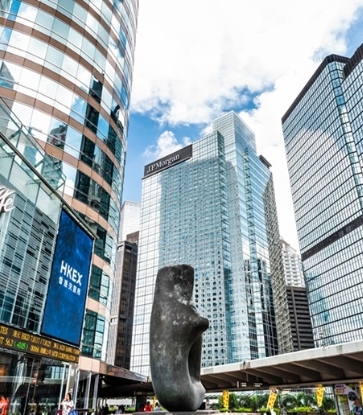Jang – The Foundation of Korean Cooking
“The taste of a dish comes down to the jang.”
“To truly know a family, one must first taste their jang.”
There are numerous Korean proverbs related to jang, the trio of fermented sauces that make up the foundation of Korean cooking: doenjang (soybean paste), ganjang (soy sauce), and gochujang (red chili paste).
Of the three, gochujang has the shortest history. This is because chili peppers were only introduced to Korea in the 17th century following the Japanese invasion of Korea in 1592 and even then, chili peppers were not immediately embraced as a food ingredient due to its perceived toxicity.
In Hanja (characters borrowed from Chinese and incorporated into the Korean language with Korean pronunciations), the character for jang is a combination of two different characters – one which stands for ‘commander’ and the other for ‘fermentation.’ Just as the role of a commander is crucial in the military, so is jang to a dish.

Key Ingredient
The story of doenjang and ganjang begins with soybeans. Traditionally, newly-harvested soybeans are carefully washed, soaked, and boiled down until completely soft. The cooked soybeans then go through the process of being pounded, shaped, air-dried, and fermented.
Meju is prepared as the cold season begins to kick in. The prepared meju blocks, dry and ripe to the core with mold – the good stuff! – are scrubbed thoroughly under running water and stacked inside sterilized earthenware jars. These traditional jars, preferably handmade, are covered with thousands of micro-pores that allow whatever they hold to breathe. Unsurprisingly, the type of vessel one uses in jang preparation can easily make or break the final product.
A prepared brine is poured over the meju until the stack is fully submerged. A handful of dry red chili peppers and a couple of lumps of hot charcoal are added to the brine. The former is believed to chase the evil spirits away while the latter is for filtration. Some households will also add a few dry jujubes, believed to symbolize prosperity.

At this stage, the jars are sealed with a breathable fabric and the contents are left to ferment for up to three to five months. The jars should be strategically placed where there is plenty of sunlight and a constant breeze.
During this process, it is important to remove the fabric cover and expose the content of the jar to direct sunlight and wind. This step is crucial for minimizing the formation of mold inside the jar.
After some 80 to 100 days, the doenjang (the solid content) and ganjang (the dark salty liquid by-product) are ready to be separated. This process is called ‘jang gareugi.’ The liquid is strained and poured into a separate jar for further aging. Meanwhile, the solids are mashed into a paste, hydrated with some of the light ganjang, and stored in a separate jar – likewise, for further aging. Longer aging leads to more complex flavors.
Different Types of Ganjang
Jaerae ganjang
Soy sauce made the traditional way using 100% soybean meju and brine. Jaerae ganjang also goes by the names Joseon ganjang, hansik ganjang and guk-ganjang.
Jaerae ganjang is most commonly used to season soups and namul dishes. It is light in color and saltier than other types of soy sauce so go easy when using it as a seasoning agent.
Gaeryang ganjang
Gaeryang ganjang literally means “modern soy sauce”. It uses a quick-fermented variety of non-traditional meju that is easy to mass produce, prepared with a mix of soybeans (or soybean meal), barley and wheat flour.
Unlike traditional meju, which typically takes months to properly dry and ferment, gaeryang meju is ready for use within 10 days. The addition of Aspergillus oryzae, a type of mold, speeds up the fermentation process. This type of soy sauce has a distinctly sweeter flavor and lacks the complexity and depth found in traditional soy sauce.
The two main types of gaeryang ganjang you will find on supermarket shelves are jin ganjang and yangjo ganjang. The former is typically used in braising liquids, marinades, and stir-fries, while the latter works better in bibimbap, dipping sauces, and dressings for fresh vegetable dishes.
Amino acid ganjang
This chemically-processed soy sauce is made by hydrolyzing a given protein-based ingredient, then neutralizing it with sodium hydroxide (NaOH) and sodium carbonate (Na2CO3).
The resulting amino acid liquid is mixed with salt, food dye, and flavor enhancers. Common protein-based ingredients used to make this type of mass-produced soy sauce include plant-derived products like soybean meal and animal-derived products such as fish protein. It’s the most common type of soy sauce found in supermarkets today.
Mixed ganjang
A blend of yangjo ganjang and amino acid ganjang that is aged, filtered and pasteurized. Caramel and sugar are commonly added to achieve the ideal color and taste. This type of soy sauce also tends to be on the sweeter side. It is best used in braising liquids and marinades.
Published 2018.06.05



















